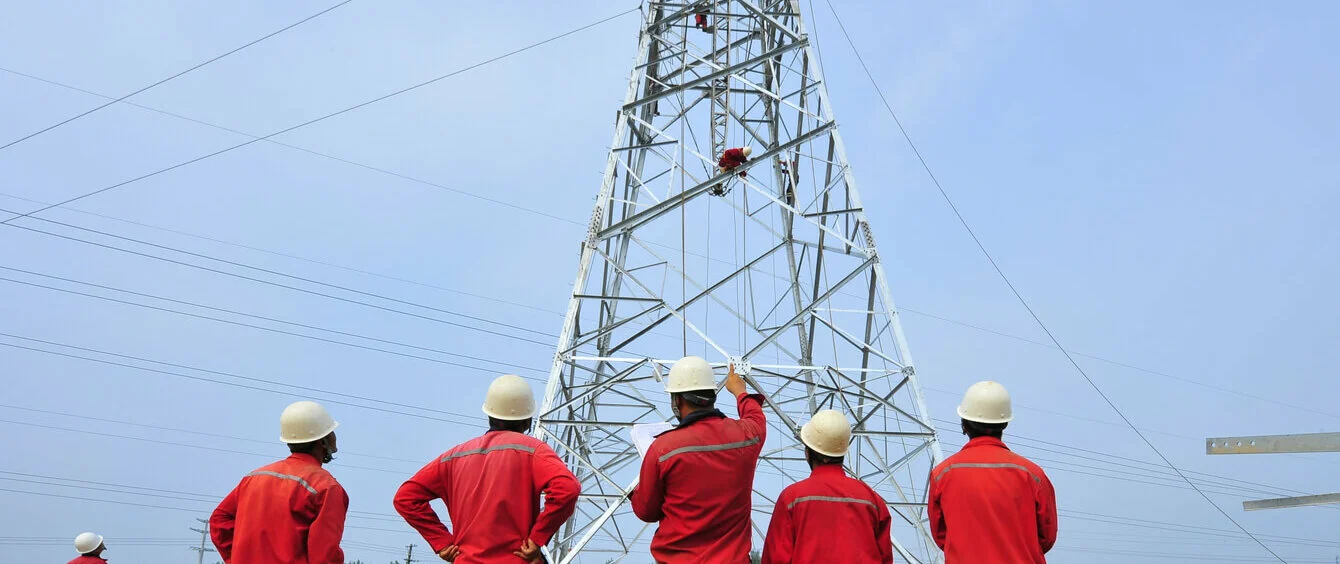The construction of power lines must be accelerated in order for the energy transition to succeed, which is the reason for the government’s move to modify legal framework conditions. It is also reason enough for en:former to present a new take on the issue. The Grid Expansion series will look at technical, societal and economic challenges along with the initiatives and innovations used to surmount them. The series will kick off with a review.
If the length of a term were correlated with the scope of the challenges it causes, then the name ‘Grid Expansion Acceleration Act’ would be a perfect choice. It came into effect in August 2011 and is to be revised this autumn. This is desperately needed, considering the current version did not have the desired outcome. That much is certain. Grid expansion has stagnated despite being so urgently needed.
In 2017 alone, undercapacity within the German transmission network racked up charges amounting to 1.4 billion euros. These expenses occur as a result of what is known as ‘redispatching’. This is where grid operators are forced to adjust the real power they put on the system at short notice, due to unexpected over or undercapacity within regional networks. This is predominantly the case when the enormous wind turbines in the north and east of Germany generate a particularly large amount of electricity at high wind speeds.
It is often impossible to bridge load discrepancies interregionally
In these cases, generation regularly exceeds local demand and power must be discharged into other regional grids. There is undoubtedly demand for this energy, particularly in industrial and well-populated regions in the south and west, along the Rhine and in Bavaria. However, current grid capacity does not allow for power transmissions of this magnitude.
A solution: It is sometimes possible to export the excess electricity to neighbouring countries or use their power lines to channel the power towards the south of Germany. However, these foreign network operators are increasingly opposed to this exchange, as their grids are also on the brink of collapsing. In these situations, transmission system operators must make sure that electricity feed-ins in the north and east of the country are curtailed so the local grids do not collapse. At the same time, power stations to the south must be ramped up in order to cover local demand.
Redispatching mainly affects conventional power plants, because green electricity takes precedent; although, in most cases, this type of power cannot be increased at will. It is only in extreme cases that renewable generators also have to limit the amount of power they place on the system. The operators of the restricted plants then receive payments to offset lost revenue. Ultimately, electricity customers therefore have to fork out for the electricity that was not even generated, in addition to paying their usual electricity usage fees. And all this just because the transmission networks are too weak.
Increased demand, delayed expansion
Nevertheless, all four operators of the German transmission network noted a decrease in these emergency interventions during the first half of 2018 in comparison with 2017. However, they caution that this is to be interpreted as a trend reversal and warn of need for further action. To what extent transmission capacity must be increased is ultimately dependent on the imbalance between regional storage and generation capacities.
In the past, there has been a tendency to underestimate demand. In 2010, the German Energy Agency, dena, re-evaluated its own forecast from 2005, producing much higher figures this time around: Instead of 850 kilometres of additional ultra high-voltage lines (around 400 kilovolts) needed by 2020, they have suddenly stipulated 4,450 kilometres. In the meantime, the BMWi (Federal Ministry for Economic Affairs) is now looking at around 7,500 kilometres (German only) worth of power lines that are to be “optimised, strengthened or rebuilt within the transmission network”.
Similar figures can be found in the Federal Network Agency’s report on the second quarter which now anticipates the need for 7,700 kilometres of power lines, of which 1,750 kilometres have been authorised and around 950 kilometres have already been built, 25 kilometres of which between April and June 2018. If things were to continue at this pace, then the current need for additional capacity would be met by 2085.
transmission system operators operate Germany’s very high frequency transmission network
overall length is just how far Germany’s transmission network extends
is the figure network operators predict to be investing in the transmissions network (onshore and offshore) by 2030
Only ten percent of required capacity has been authorised
The pace at which the network is expanding has actually decreased, despite the fact that the assumed capacity requirement is continually increasing. This is the result of a recent study on the progress of the energy transition by the Cologne Institute for Business Research. One reason for this is that not even 40 percent of the power lines that were deemed necessary eight years ago have made it through authorisation processes since 2010. In a recent article by trade journal ‘Energiepolitische Tagesfragen’ (Eng.: Current Energy Policy Issues; German only), Harald Schwarz and Klaus Pfeiffer of Cottbus-Senftenberg Technical University in Brandenburg summarise: “Complicated authorisation processes, citizen participation and lawsuits make for a sluggish network expansion in Germany.”
This is exactly where the federal government is looking to implement change. The recent ‘Electricity Grid Action Plan’ (German only), published by the Federal Ministry for Economic Affairs (BMWi), announced faster processes in order to finally accelerate ever-important grid expansion.
Over the course of the ‘Grid Expansion’ series, en:former will shed a light on technical, societal and economic challenges along with the relevant initiatives and innovations used to surmount them. The next part will deal with the European take on the progress of grid expansion and in subsequent releases en:former will also be analysing what technical possibilities and innovations are available to expand networks and why authorising and building new power lines is taking so long.
Photo credits: QiuJu Song, shutterstock.com
